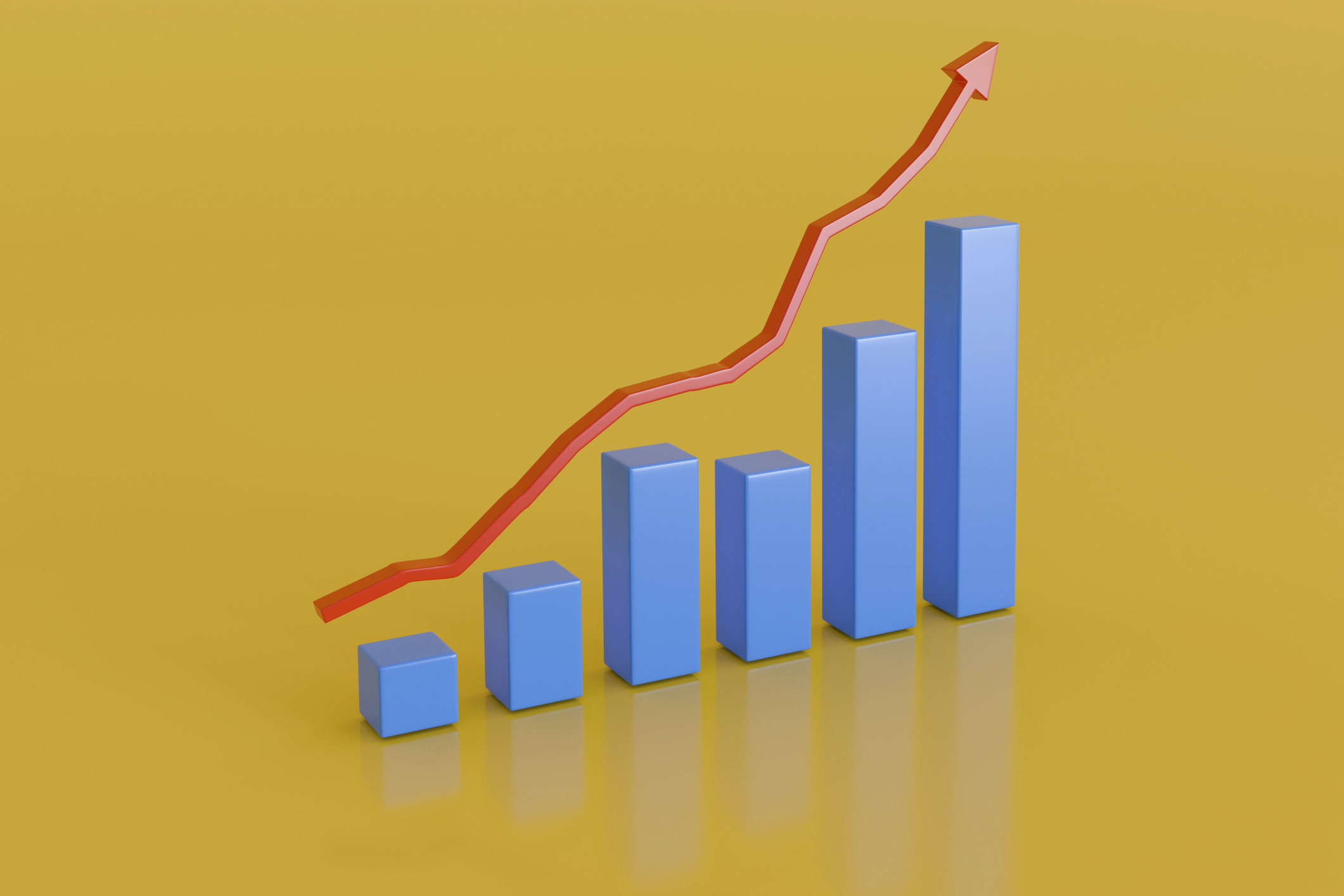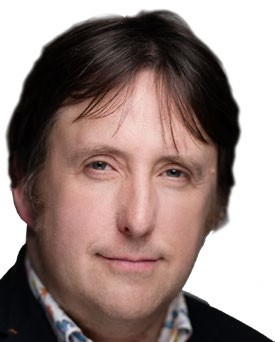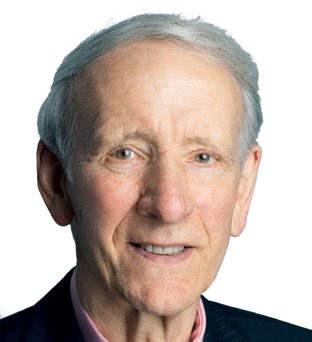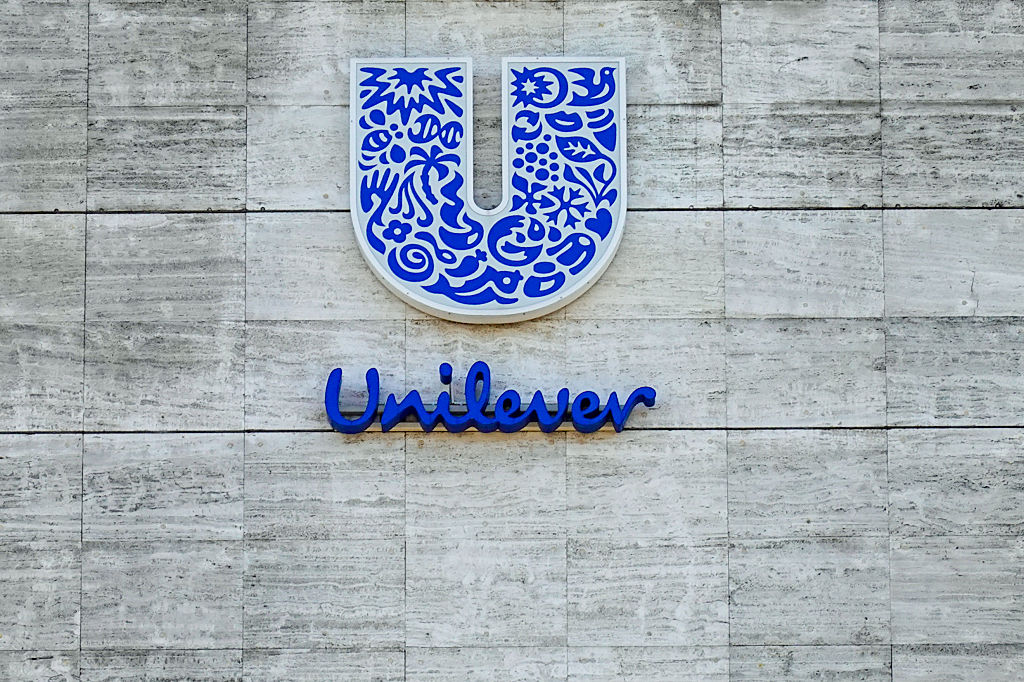MoneyWeek experts pick the best investments for the next 25 years
MoneyWeek's experts tell us what they would go for if they could pick only one stock, sector or market for the next quarter-century. Tips range from defence and agriculture to Vietnam and Jardine Matheson



Every generation gets one industrial revolution. Ours is AI – still novel, not yet fully understood, but certain to become so embedded in life that we’ll forget how we ever worked without it. The question isn’t if AI will transform the world, but who can be relied upon to profit from it throughout the 25-year arc ahead of us. My bet is Microsoft (Nasdaq: MSFT). Now 50 years old, Microsoft has turned repeated reinvention into an art. Windows in the 1980s, Office in the 1990s, the cloud in the 2010s, and now AI integration. It is the same playbook: build essential tools, make them indispensable, then charge rent for their use. This quiet consistency has made it the default operating system of modern business.
Microsoft is the backbone of work. Windows powers around 70% of desktop PCs, Office 365 counts more than 400 million paid commercial customers, and Azure holds roughly 23% of the global cloud market, depending on who you ask. Last year’s revenue topped $240 billion. The balance sheet carries more cash than some countries, the dividend has risen every year since 2003, and buybacks continue by the tens of billions.
AI is simply the next wave. Through its multibillion-dollar partnership with OpenAI, Microsoft is now building “Copilot” intelligence into Word, Excel, Outlook and Teams, software used by more than one billion people. It earns both from the infrastructure that powers AI and from the applications that use it.
The bears will say the stock is priced for perfection, and it’s certainly true that Microsoft’s shares aren’t cheap. But quality rarely is. Its durability, recurring revenue and global brand form a competitive advantage few can match. Microsoft isn’t the story of every new technology; it’s the story of making technology pay. Hype doesn’t compound. Sales and profits do. If AI defines the next quarter-century, Microsoft is how you play it.

Solar panels don’t last forever, and the world has a huge problem on its hands: eight million tonnes of solar panel waste by 2030, escalating to 80 million tonnes by 2050. In the US more than 90% of them end up as landfill, but they contain toxic heavy metals (including lead, cadmium and selenium) that leach into soil and groundwater, posing risks to ecosystems and human health. California has already banned them from landfills.
Panels are designed for durability. This very trait, never mind their complex composition, makes recycling difficult. The US will have one million tonnes needing recycling by 2030, most of them in the south-western states. Comstock (NYSE: LODE) has quite the first-mover advantage: a proven, functioning demonstration recycling facility in Nevada, which processes 135,000 panels a year. It is now constructing three more full-scale facilities, the first of which will be operational next year. Each lies just across the border from California.
Comstock is paid a “dumping fee” of $500 per tonne to take the panels (it costs the same to send them to landfill). It then recycles them, which costs $100 per tonne, to produce ground aluminium, ground glass, silver and copper, which it then sells for $200/ tonne. So for every tonne it processes, it makes $600, an 85% margin.
If the plan for three plants to be operational by 2030 (processing 300,000 tonnes) is successful, that implies $180 million in earnings, including ten million ounces of silver production, which equates to a $1.8 billion valuation by 2030.
This company has $100 million in real estate and silver mining properties worth perhaps $50 million. Plus a lottery ticket – 80% ownership of a burgeoning biofuels business valued at $1 billion. All this for a market cap of $150 million. Talk about an asymmetric opportunity. The main doubts surround management and their ability to execute. That’s what is holding the share price back.

While everyone chases the next AI unicorn, I prefer to look at traditional sectors that could benefit from this wave of technology – agriculture and the food industry, for example. It faces major challenges: climate change, increasing regulation of environmental and social governance (ESG) and rising populations. Global agriculture production will need to increase by 60%-70% by 2050, according to US agricultural machinery giant Deere & Co. Yet resource scarcity and climate change make that harder.
Meanwhile, France and the eurozone look likely to face renewed economic and political turmoil, and the single-currency area could even fracture. Agriculture and commodities offer a hedge as tangible assets. France, the former breadbasket of Europe, is now a net importer of food. Technology is already helping the sector in Europe. Robotic milking machines have become widespread over the past 15 years. Satellite-guided tractors allow farmers to manage hundreds of hectares single-handedly while monitoring soil health and productivity. These machines require regular maintenance and replacement due to dirt and dust, generating steady income streams.
I recommend the Global X AgTech & Food Innovation Ucits ETF (LSE: KROG) to profit from this theme. The exchange-traded fund holds Deere and other firms that will power the farming revolution. I would also consider investing in Corteva (NYSE: CTVA), a producer of seeds, and Trimble (Nasdaq: TRMB), which focuses on sensors. In 2050, I will hopefully be retiring to my farm in Brittany with a few golden Napoleons in the pocket, I will open the bottle of Armagnac I received from my first job at JPMorgan in Paris. I will then re-read this page, certainly with a smile.

Even though the defence industry relies heavily on government spending, which can be cyclical and subject to the whims of politics, thanks to the nature of the industry, contracts are typically very long-term. This means the sector is attractive from an investment perspective, especially as spending on defence is steadily increasing around the world.
Investors need only look at Babcock, which has a hand in maintaining the UK’s nuclear deterrent, among other things, to understand just how long-term this industry really is. In the company’s 2024 annual results presentation, it outlined the road map for the UK’s current submarine fleet to 2080. This included the arrival of the UK’s new attack submarine class, deterrent submarine class and the disposal of 50 defunct vessels.
BAE offers another example of the opportunity in the sector. At its half-year results, it reported an order backlog of £75 billion, three years’ revenue, with a further £180 billion of potential in the pipeline. That means the company can lock in around a decade of sales.
BAE is one of the giants of the sector in the UK, and every country around the world has their home defence champion. As such, the best way to invest in the growth of the defence industry worldwide is through a broad-based ETF or defence-sector tracker fund. The iShares Europe Defence Ucits ETF (LSE: DFEU) holds the most prominent European names in the sector, including Germany’s Rheinmetall and France’s Thales, as well as BAE and Rolls-Royce.
The iShares Global Aerospace & Defence ETF (LSE: DFND) has a broader mandate and includes top holdings such as GE Aerospace, Boeing and RTX, which are active in the defence market but also have civil arms. Finally, there is the Future of Defence Ucits ETF (LSE: NATP). This ETF blends tech and defence, with names like Palantir, Palo Alto and CrowdStrike in the top ten, as well as the likes of BAE and Safran.

If you had predicted in early 2000 that the technology sector would be the best-performing area of the market over the next 25 years, you would have looked like an idiot after three and then been forgotten. Nobody would now remember your prediction. But since technology drives all economic progress, it’s a good bet that it will again lead the investment field over the next 25 years, especially since markets are not at a speculative peak as in 2000.
Volatility, regular sharp setbacks and bear markets are inevitable but investors who see these as buying opportunities and don’t panic are likely to do well. The obvious vehicles are the Polar Capital Technology Trust (LSE: PCT) and Allianz Technology Trust (LSE: ATT) but HgCapital Trust (LSE: HGT) and the tech-orientated Baillie Gifford trusts, Scottish Mortgage Investment Trust (LSE: SMT) and the Edinburgh Worldwide Investment Trust (LSE: EWI) should also do very well. AI is likely to be old hat long before the 25 years are up, but other technologies will take over.
Quantum computing is still well short of commercial application, but could be the next revolutionary innovation. The unquoted PsiQuantum is a leader in the field and one of the largest holdings of Edinburgh Worldwide. Improvements in battery technology have the potential to revolutionise transport and resolve the intermittency of renewable energy and the unresponsiveness to demand of nuclear. Tesla seems the company most likely to succeed. High exposure to innovation makes the US still the best place to invest.

There is currently widespread and, in my view, well-placed concern that the AI stocks dominating the market are hyped. The danger of this narrative is that semiconductors – a word which I will follow form in using fairly generically here to refer to the supply chain producing various types of computer chip – have become synonymous with the technology, and as a result risk being caught up in the unfolding AI narrative, for better or worse.
Taking a short-term view, there is no doubt that the valuations of many leading semiconductor stocks look stretched thanks to the AI hype. Broadcom has reached nearly 87 times trailing earnings, while Advanced Micro Devices trades at over 100 on the same metric after a surge of 40% following the announcement of an agreement with OpenAI. These numbers make Nvidia, the world’s first $5 trillion company, look reasonable on a piffling 54 times earnings.
But with a 25-year time horizon, the semiconductor industry looks an obvious play. It is cyclical, and investors should expect ups and downs, but while many semiconductor stocks are currently overpriced thanks to AI, it’s a safe bet that most are currently undervalued compared with whatever comes along next. Whether that’s quantum computing or robotics finally gaining mainstream adoption, or something else that we can’t yet imagine, it’s a reasonable assumption that semiconductor technology will underpin the next world-changing technology.
The only real risk to this hypothesis that I can see is that some technology comes along that displaces semiconductors and computer chips as we know them. That would be a monumental economic and technological shift if it were to happen. My assumption if it did is that it would either come from one of the current players or, if not, that one of these would buy whichever start-up had discovered the technology very quickly (Nvidia being the most likely in both instances given the resources it has available).
For now, note that many firms aren’t in fact overvalued. Taiwan Semiconductor trades at below 32 times earnings despite having a near monopoly on advanced chipmaking. ASML, one of Taiwan Semi’s suppliers with a near monopoly on lithography, trades in the mid-thirties. Go active if you like, but I’d opt for a broad-based tracker to maximise the chances of capturing any future innovations in the sector. TSMC and ASML are the top two holdings in the VanEck Semiconductor Ucits ETF (LSE: SMGB) and the First Trust Bloomberg Global Semiconductor Supply Chain Ucits ETF (LON: FCHP).

Looking back is easy, but as investors we look ahead. It is unlikely that the best answer is in the rear-view mirror. In line with MoneyWeek’s tried and tested value bias, it would be remiss of me not to present a contrarian value trade. Long-term expected returns, estimated by the likes of investment management group GMO, are negative for US equities and modest for other major markets.
Obviously, they favour deep value, but who doesn’t? One area that has disappointed is bonds. We all seem to hate them, which means the contrarians should investigate. I favour index-linked bonds (linkers) because they guarantee a positive real return, which currently means whatever inflation is plus 1.6% per annum, for the index. Don’t forget that linkers pay against RPI, which is roughly 0.9% higher than CPI. A real return of 2.5% is explosive, as Kwasi Kwarteng will recall.
Until the interest-rate hikes in 2021, linkers had matched the FTSE 100, including dividends, over the previous 30 years. Yet since those hikes began, linkers have fallen by more than 40%, while the FTSE is up 55%. Never in history have we seen a gap so wide.
For the next 25 years, I’m backing linkers. The simplest way is via the iShares Index-Linked Gilts Ucits ETF (LSE: INXG). For those with a strong disposition, have a look at the ultra-long dated issues such as the 0.125% 2058, which locks in a real return of more than 2%. That might not sound like much, but you are guaranteed to double your money. What’s more, if and when inflation returns, the uplift will be significant, and your capital returns will be tax-free.

A few years ago I was chatting with the psychologist Gerd Gigerenzer, who has published research suggesting that simple rules of thumb often perform better than clever ideas or sophisticated models. We laughed about how difficult it was to generate business ideas from this revelation – often the most valuable insights are simple and freely available, but expensive advisors encourage costly mistakes. For instance, you can find Warren Buffett’s shareholder letters on the Berkshire Hathaway website, whereas Merrill Lynch charged Royal Bank of Scotland tens of millions of pounds for advice supporting Fred Goodwin’s disastrous hostile bid for ABN Amro.
An investment likely to do well is the FTSE All-Share Index, a diversified benchmark consisting of just under 600 stocks from the largest multinationals, such as AstraZeneca, HSBC and Shell, down to smaller, quirkier companies like Games Workshop or Goodwin. The Barclays Equity Gilt Study shows that equities tend to compound at between 5% and 7% a year over decades.
Not every company will generate that 5%-7% – but a diversified portfolio over the decades is likely to. An international index such as the MSCI World index is an alternative, but whichever you choose, opting for a low-cost tracker is important. A 6% annual return, compounding each year, would quadruple your money.
With a cost of ten basis points per annum charged on a £1,000 initial investment, an investor’s end sum falls by roughly £100, from £4,300 to £4,200. An active fund manager who performs in line with the index, but charges 1% every year, would reduce the end sum by £900 to £3,400, taking a fifth of your investment. So, my pick for the next 25 years is a low-cost FTSE All-Share Index tracker, and a subscription to MoneyWeek. Two options are the iShares UK Equity Index Fund and the Vanguard FTSE UK All Share Index Unit Trust.

There are plenty of reasons to be pessimistic about global trends, yet a lot of emerging-market economies should be much wealthier in 2050 as long as we avoid the very worst geopolitical scenarios. Emerging markets now comprise roughly half the world’s economy, but only 10% of the value of most global stock market indices, which are dominated by the US and where the emerging-market part is mostly China, Korea and Taiwan. So for a bit of cheap optimism, let’s pick Jardine Matheson (Singapore: J36). To avoid confusion, note that while the stock technically has a primary listing in London, almost nobody trades this. Jardine is a Hong Kong-based conglomerate dating back to the early 1800s, with interests in automotive, construction, engineering, hospitality, real estate, retail and more. It operates mostly in China and Hong Kong, Indonesia and the rest of Southeast Asia.
The group is controlled by the Keswicks, descendants of the Jardine family. I like family-run firms that can take a long view, but they mustn’t stand still as the world changes. Jardine is simplifying its structure and intends to focus on being an investment holding company rather than a family owner-operator, which means more outsiders running its listed subsidiaries.
On 1 November 2000, Jardines closed at $5.75. On 31 October 2025, it closed at $58.75 – ten times higher, excluding dividends. A lot of this is down to a hugely successful deal to rescue Indonesian conglomerate Astra in 2000. Can it find an opportunity like that again? More recent deals suggests that it sees Vietnam as the best prospect for an investment that can move the dial.
Obvious risks range from political shifts in China to whether the ascendancy of electric vehicles will undermine Astra’s dominance of car distribution in Indonesia. Yet Jardines trades on a price/earnings (p/e) ratio of 11, a price-to-book value ratio of 0.6 and a dividend yield of 3.8%. It produces lots of cash and has excellent connections. You could do a lot worse.

When it comes to fast-growing emerging markets, the choice is between India and Vietnam. And Vietnam wins. It is an Asian industrial dragon, with a young, technically proficient workforce. It is moving up the value-added chain, especially in technology. GDP is expanding by more than 6% a year, increasingly reliant on middle-income consumers. The local stock market is dirt cheap.
Vietnam has infinitely better infrastructure than India, which is an important consideration for an export-orientated economy. The emphasis on exports presents threats (in the form of tariffs) as well as opportunities. I would maintain, slightly controversially, that India’s socialist past weighs more heavily on its current economy than Vietnam’s dominant Communist Party. Vietnam strikes me as thoroughly capitalist, whereas India still boasts baffling examples of Fabian-style socialism.
India’s population is younger than Vietnam’s, with a median age of 28 versus 33, but Vietnam’s workforce is better trained and educated. Vietnam also features a much more robust female participation rate. Meanwhile, owing to its size, Vietnam is better equipped to avoid the middle-income trap than India.
I’ve left the obvious geopolitical issue for last. India does boast a robust democracy, which is fantastic, and Vietnam is self-evidently communist. Vietnam’s Communist Party (CP) is also instinctively close to the Chinese CP. But if you are the Trump administration, what do you think is more important – onshoring Vietnam’s low-cost labour industries (making earbuds for Apple and phones for Samsung in Los Angeles, for instance) or having a close relationship with a regional power (Vietnam) that is not China? As venture capitalist Peter Thiel has noted, Vietnam serves as a non-expansionist hedge against China, one that lacks China’s imperial ambitions. Investors can gain access to the country’s potential through the Vietnam Enterprise Investments Limited (LSE: VEIL) investment trust.

The next 25 years will see a growing demand for pharmaceuticals because of lifestyle factors, rising life expectancy and the increasing proportion of populations aged over 60. The proportion of over-60s in advanced economies is expected to rise from 26%-30% in 2020 to 35%-45% in 2050, and the over-60s account for two-thirds of all drugs. This will drive up the sales and profit growth of pharmaceutical companies.
The most serious diseases for the over-60s are cardiovascular disease, chronic respiratory disease, cancer, diabetes and dementia (mainly Alzheimer’s). Three of these – diabetes (cases have doubled since 2000), Alzheimer’s (a fourfold rise since 2000) and hypertensive heart disease (more than doubling since 2000) – rank as the fastest-growing major diseases in wealthy countries. We can add obesity to these: the proportion of Americans classified as obese has risen from 15% in 1995 to 40% in 2024.
Investors should focus on large companies making drugs to treat several of the major diseases mentioned above, with strong pipelines and substantial investment in research and development (R&D) to restock their pipelines. Two good examples are AstraZeneca (LSE: AZN) and Eli Lilly (NYSE: LLY). AstraZeneca specialises in oncology, cardiovascular, respiratory and rare diseases. Lilly specialises in diabetes, obesity, oncology, immunology and Alzheimer’s.
In 2024, AstraZeneca’s sales rose by 18% over 2023 and it invested 31.4% of sales in R&D. Lilly’s sales were up 32% over 2023 and it invested 24.4% in R&D. AstraZeneca has 20 new molecular entities in its late-stage pipeline while Lilly has 25. Lilly is on a 2026 p/e of 26.7 and a forward dividend yield of 0.75%; the respective figures for Astra are of 16.6 and 1.95%.

Wise (LSE: WISE) started with a simple business model. It was founded in 2011 to offer consumers a much cheaper and faster way to transfer money between currencies. Other providers used the outdated Swift system, which routes money through intermediary banks, adding time and fees. Wise avoids this by not moving money across borders. Instead, Wise keeps local bank accounts in numerous countries. When a user sends money, Wise pays out from its local account in the destination country while receiving funds locally in their home country. This makes transfers faster, cheaper and more transparent, as exchange rates and fees are shown up front. While a Swift transfer can take a week and cost up to 6%, Wise’s transfers are often instant and cost a fraction of a percent. Initially, customers were individuals like expatriates. This has evolved – now the company serves small and medium-sized businesses, saving them a great deal of time and money.
Wise could be a great investment for the next 25 years. Its service is far ahead of the competition, which raises the question: what if others try to copy Wise? The answer is that Wise now offers its service to competitors. More than 85 banks now use Wise instead of Swift, and this number is growing quickly. What began as a fast, cheap service for expatriates is evolving into a global infrastructure that could underpin the worldwide payments system. If it succeeds, Wise could become one of the world’s most important companies, and in doing so also one of the most valuable.
This article was first published in MoneyWeek's magazine. Enjoy exclusive early access to news, opinion and analysis from our team of financial experts with a MoneyWeek subscription.
MoneyWeek
Subscribe to MoneyWeek today and get your first six magazine issues absolutely FREE

Sign up to Money Morning
Don't miss the latest investment and personal finances news, market analysis, plus money-saving tips with our free twice-daily newsletter
Don't miss the latest investment and personal finances news, market analysis, plus money-saving tips with our free twice-daily newsletter
Get the latest financial news, insights and expert analysis from our award-winning MoneyWeek team, to help you understand what really matters when it comes to your finances.
MoneyWeek is written by a team of experienced and award-winning journalists, plus expert columnists. As well as daily digital news and features, MoneyWeek also publishes a weekly magazine, covering investing and personal finance. From share tips, pensions, gold to practical investment tips - we provide a round-up to help you make money and keep it.
-
 Should you invest in biotech?
Should you invest in biotech?Healthcare and biotech stocks offer tempting valuations following years in the doldrums
-
 How to limit how much of your Christmas bonus goes to the taxman
How to limit how much of your Christmas bonus goes to the taxmanIt's Christmas bonus season but the boosted pay packet may mean much of your hard-earned reward ends up with HMRC instead of in your pocket
-
 Quality emerging market companies with consistent returns
Quality emerging market companies with consistent returnsOpinion Mark Hammonds, portfolio manager at Guinness Global Investors, selects three emerging market stocks where he'd put his money
-
 British blue chips offer investors reliable income and growth
British blue chips offer investors reliable income and growthOpinion Ben Russon, portfolio manager and co-head UK equities, ClearBridge Investments, highlights three British blue chips where he'd put his money
-
 Coreweave is on borrowed time
Coreweave is on borrowed timeAI infrastructure firm Coreweave is heading for trouble and is absurdly pricey, says Matthew Partridge
-
 Renewable energy funds are stuck between a ROC and a hard place
Renewable energy funds are stuck between a ROC and a hard placeRenewable energy funds were hit hard by the government’s subsidy changes, but they have only themselves to blame for their failure to build trust with investors
-
 Profit from document shredding with Restore
Profit from document shredding with RestoreRestore operates in a niche, but essential market. The business has exciting potential over the coming years, says Rupert Hargreaves
-
 The war dividend – how to invest in defence stocks as the world arms up
The war dividend – how to invest in defence stocks as the world arms upWestern governments are back on a war footing. Investors should be prepared, too, says Jamie Ward
-
 Literacy Capital: A trust where great returns fund a good cause
Literacy Capital: A trust where great returns fund a good causeThere’s plenty to like about specialist private-equity trust Literacy Capital, says Max King
-
 An AI bust could hit private credit – could it cause a financial crisis?
An AI bust could hit private credit – could it cause a financial crisis?Opinion Private credit is playing a key role in funding data centres. It may be the first to take the hit if the AI boom ends, says Cris Sholto Heaton

